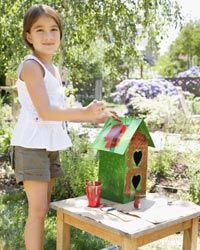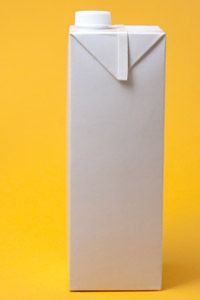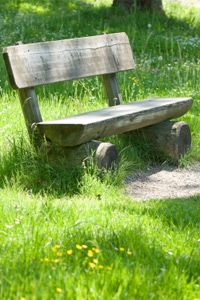In your landscape, birds are like flowers that move. They have some practical benefits, too, like eating the bugs that eat your plants. Providing birds with a home is a great way to attract them to your yard and encourage them to stay. But instead of buying a pre-made bird house, you can make one easily and inexpensively from a variety of recycled materials.
Making a recycled bird house is a great family activity. But before you even begin gathering materials to construct one, you need to decide what type of bird you want to attract. Some birds, like robins and barn swallows, prefer an open nesting shelf to an enclosed house. Cavity nesters -- birds who'll move into a bird house -- include owls, swallows, ducks, bluebirds, purple martins, wrens and prothonotary warblers. The species of bird will determine the size of the house and entrance hole, where to drill the entrance and how high to mount the bird house.
Advertisement
Now, no bird carries around a tape measure when it's house hunting. It's unlikely any bird will reject your housing offer because it's an inch too big or slightly out of square. But it's good to keep in mind that different birds have different size requirements and aesthetic preferences.
For example, bluebirds like to nest 4-6 feet (1.2-1.8 meters) above the ground in a box that's about 5 inches (12.7 centimeters) square and 8-12 inches (20-31 centimeters) tall. They need a small entrance hole, about 1.5 inches (3.8 centimeters) in diameter, and prefer it to be high on the box. If you want to attract a barn owl, however, you'll need a substantially bigger and taller rectangular box and a 6-inch diameter (15-centimeter) entrance hole that's near the bottom of the bird house, and you'll want to mount it 12-18 feet (3.7-5.5 meters) above the ground [source: Kress, Recycled Bird House Company].
How you mount the bird house is also important. Some birds don't mind hanging houses, but plenty of others want stability in the wind. Nailing the house to a tree is an option, but it damages the tree. A mounting post allows you to put the nesting box where you can see it. You can use wooden or metal posts, or PVC pipe. You can assemble PVC to telescope for cleaning ease. It's hard for squirrels and cats to get a grip on PVC pipe, too.
Advertisement




